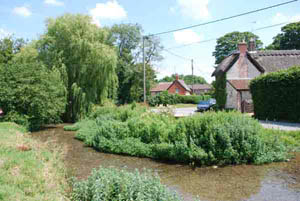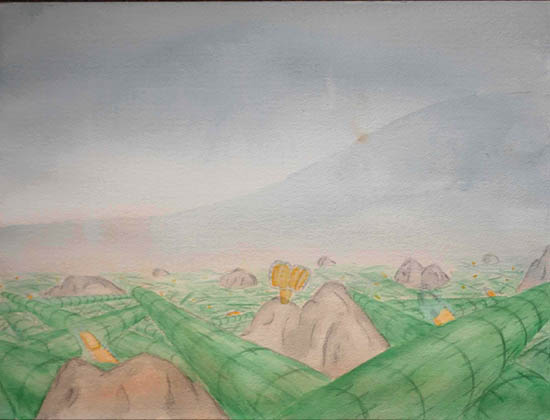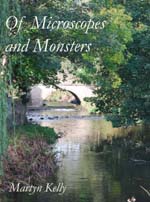River Wylye, Kingston Deverill
 The River Wylye is a chalk stream in
southern England, where I did some work during 2010 and 2011. The
sequence of pictures are based on a single submerged stone in the
headwaters of the River Wylye at the village of Kingston Deverill,
about 15 km upstream of Warminster in Wiltshire. At this point, the
Wylye is already quite wide, but very shallow, only about 10 cm
deep, with a substratum consisting mostly of pebbles and gravel,
mostly of flint, but with about 10-20% of the stream bed covered by
cobble-sized stones.
The River Wylye is a chalk stream in
southern England, where I did some work during 2010 and 2011. The
sequence of pictures are based on a single submerged stone in the
headwaters of the River Wylye at the village of Kingston Deverill,
about 15 km upstream of Warminster in Wiltshire. At this point, the
Wylye is already quite wide, but very shallow, only about 10 cm
deep, with a substratum consisting mostly of pebbles and gravel,
mostly of flint, but with about 10-20% of the stream bed covered by
cobble-sized stones. These cobble-sized stones were noticeable
not just for their size relative to the rest of the streambed, but
also because of their dark coloration. Closer inspection shows that
there are patches of these darker areas, and scraping with a
fingernail showed that these dark areas overlay a millimetre or two
thickness of fine silt .
These cobble-sized stones were noticeable
not just for their size relative to the rest of the streambed, but
also because of their dark coloration. Closer inspection shows that
there are patches of these darker areas, and scraping with a
fingernail showed that these dark areas overlay a millimetre or two
thickness of fine silt .
 Under the microscope, these dark patches were shown to be
composed almost entirely of the cyanobacterium
Phormidium
flavosum. There were some diatoms present (mostly
Nitzschia
spp and Staurosirella pinnata ag.) but these comprised less
than 10% of the total.
Under the microscope, these dark patches were shown to be
composed almost entirely of the cyanobacterium
Phormidium
flavosum. There were some diatoms present (mostly
Nitzschia
spp and Staurosirella pinnata ag.) but these comprised less
than 10% of the total.
Combining the field and the microscopic observations allows us to build
up a picture of how the biofilm is composed. The relative stability of the
cobbles, relative to the pebbles and gravel that predominate on the river
bed allows a thick biofilm to develop which, in turn, leads to light
limitation. Organisms such as the Phormidium filaments (a.) are
able t glide towards the light and form a mat of interwoven filaments within
which sand and silt particles are trapped. As the mat gets thicker, so the
filaments constantly adjust their position in order to maximise their
exposure to light. These conditions also favour motile diatoms such as
Nitzschia spp. (b.) over sessile ones. Staurosirella pinnata
(c.), which is also present on the cobbles, is common in various habitats
within chalk streams. It can grown attached to sand grains and it may grow
here attached to particles within the biofilm, or it may represent
“contamination” from areas around the Phormidium-dominated
assemblages.

The final picture in the sequence shows this microscopic assemblage of organisms displayed as a “landscape”, as a grazing invertebrate (such as a chironomid larva) might encounter it.


The final picture in the sequence shows this microscopic assemblage of organisms displayed as a “landscape”, as a grazing invertebrate (such as a chironomid larva) might encounter it.




